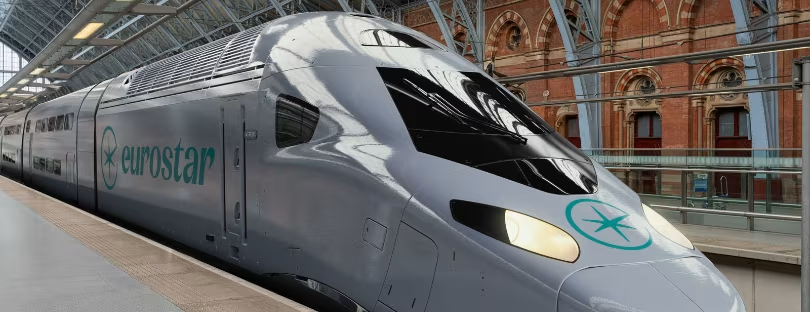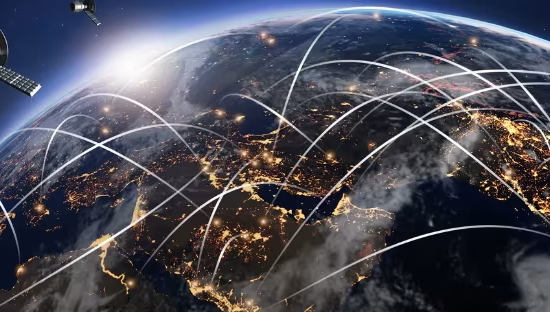
Meet Eurostar Celestia — The Next-Gen Double-Decker Train Redefining Cross-Border Travel
In a move that underscores its ambitions to redefine international rail travel, Eurostar has announced a landmark €2 billion investment to acquire up to 50 new double-deck high-speed trainsets, built by Alstom. The confirmed order covers 30 trainsets, with an option for 20 more, making this the first time such double-deck trains will operate through the Channel Tunnel and on the UK rail network.
For Alertify readers—who follow travel tech, roaming, and connectivity—this isn’t just a train order. It’s a signal of how cross-border travel infrastructure is evolving fast: more seats, higher frequencies, greener technology, and new routes. Here’s how the story unfolds.
A New Fleet with a New Name – Introducing Eurostar Celestia
The new fleet has been christened Eurostar Celestia, a name derived from the Latin caelestis (“heavenly”), chosen by Eurostar’s own team to evoke the essence of star-linked travel. These trains will be based on Alstom’s flagship Avelia Horizon platform, adapted for Eurostar’s international services.
Each trainset will measure about 200 metres in length, fitted with double-deck cars and built for interoperability across Eurostar’s existing five-country network (UK, France, Belgium, Netherlands, Germany) plus proposed extensions to Geneva and Frankfurt. Seat capacity is set to increase by roughly 20 %, with about 540 seats per 200 m train, and up to 1,080 seats when two sets are coupled (as today through the Channel Tunnel).
The first units are slated for delivery in January 2031, with commercial operations starting in May 2031 (six trains initially in service). Once fully rolled out, the Celestia fleet will operate alongside Eurostar’s current 17 e320s, bringing the total fleet size to 67 trains – representing a 30 % uplift over today.
Why This Investment Matters
Capacity & Growth
Eurostar is targeting 30 million passengers annually, and increasing capacity is central to this ambition. The new Celestia sets allow more seats per service, meaning more frequency, perhaps new city-pairs and more flexibility. For the travel tech world, this implies more connectivity, more travellers choosing rail over air, and more data/roaming opportunities across borders.
Sustainability & Accessibility
Designed to be all-electric and future-proof, the Celestia trains have sustainability built in:
- Up to 97 % recyclable components, and ≈25 % of materials made from recycled content.
- Energy savings of 20-50 % compared to the current fleet.
- Accessibility features built in with input from passengers, accessibility groups, and 100+ Eurostar team members.
- Built to handle climate-change impacts and long-term resilience.
For any travel tech or SIM/roaming platform, this signals a shift: rail travel no longer a “second choice” but a premium, sustainable, high-volume option.
Infrastructure & Jobs
Eurostar will maintain the entire new fleet at its London depot at Temple Mills Depot, East London, which itself will undergo an investment of ≈€80 million to adapt for the new trains. The project is expected to create around 350 new skilled jobs, reinforcing the UK as a hub for international high-speed rail. That local economic impact is a key piece for travel industry stakeholders (hotels, hospitality, and local services) to watch.
Network & Reach
With these trains, Eurostar moves beyond its core London-Paris/Brussels/Amsterdam routes into new geography (Geneva, Frankfurt). The interoperability across five countries highlights the increasing integration of European high-speed rail. For travellers, that means more seamless service, fewer plane hops, and more connectivity. For your audience of digital nomads and frequent travellers, it means new opportunities to roam, connect, and stay mobile.
What Sets It Apart
- **First double-deck high-speed trains through the Channel Tunnel and on the UK network **– this is a genuine first.
- A comfort and premium-experience design: Eurostar emphasises bespoke interiors, premium passenger experience, and the “next generation” of their brand.
- Strategic timing: With air-travel pressures, climate targets, increased demand for international rail, Eurostar is positioning itself to scale.
- Integration of sustainability & digital/maintenance tech: The Avelia Horizon platform brings predictive maintenance, energy efficiency and interoperable signalling into play.
Strategic Implications—For Eurostar, Europe & Travel Tech
From a strategic lens, this isn’t just about buying trains. It’s about capturing growth, redefining inter-city travel, and locking in infrastructure advantage. With the fleet expansion, Eurostar is positioning itself to defend against competition (other operators eyeing the Channel Tunnel) and to cement a lead in long-haul European rail travel.For travel tech and connectivity:
- More train-seats = more travellers using data/roaming services.
- Longer routes (London-Frankfurt/Geneva) = potential need for cross-border connectivity, seamless eSIM roaming.
- Sustainability-led travel = aligned with the values of the frequent-traveller segment (25-45) who care about climate impact.
- Depot investments & job creation = regional ecosystem effects (hotels, local tech, transport support) which your B2B clients in hospitality and tourism may tap into.
Industry Context & Competitive Landscape
In the current rail market, double-deck high-speed train orders remain rare in the UK/Channel Tunnel context. Eurostar’s move raises the bar. Comparatively:
- Other high-speed fleet orders are underway (but fewer double-deck trainsets for cross-border international service).
- Airlines are under pressure for sustainability; rail is increasingly framed as the preferred option for under-five-hour journeys.
- For example, the Avelia Horizon platform was originally developed for SNCF Voyageurs’ own fleet, and this Eurostar order builds on that.
- The timing (2031 delivery, 2030s ramp) means Eurostar is playing the long game and locking in capacity ahead of demand spikes.
In short: Eurostar is going big and early. Others may follow, but the infrastructure lead, brand premium and early mover advantage give it a notable edge.
Conclusion — Why This Matters
For Alertify and its audience of tech-savvy, travel-hungry professionals, the Eurostar Celestia announcement is a milestone. It signals that rail travel is evolving from a viable alternative to air to a smart, sustainable, high-capacity, cross-border connectivity platform. The investment in double-deck trains, sustainability, accessibility, and network expansion positions Eurostar not just as a transport provider, but as a technology-enabled connector of people, places, and opportunities.
In the wider landscape, this move underscores the growing alignment of transport, digital connectivity, and hospitality: expanding rail capacity means more travellers staying longer, staying connected, and roaming internationally. For your work with eSIM & SIM providers, travel brands and B2B partnerships, this opens opportunities: special roaming packages for high-speed travellers; onboard connectivity solutions; premium services for business-class and digital-nomad markets; strategic partnerships with hotels near major hubs like London, Paris, Frankfurt, Geneva.
In sum: Eurostar’s €2 billion investment isn’t just a train order—it’s a signal that the era of seamless, sustainable high-speed travel across Europe is accelerating. The companies that recognise and capitalize on this shift—through connectivity, travel-tech, hospitality integration—stand to ride the next wave of traveler behavior transformation.









